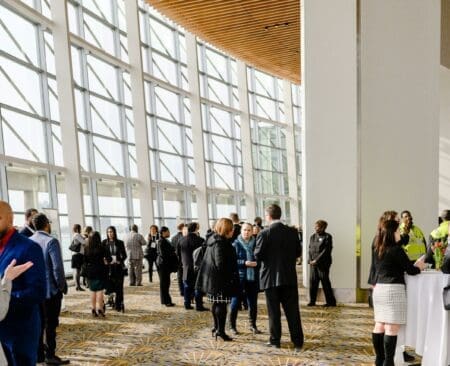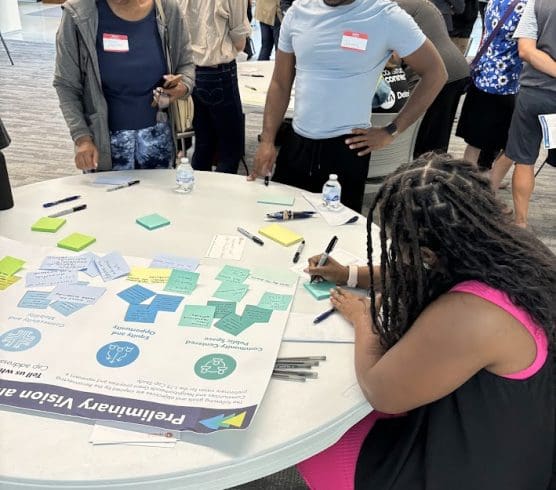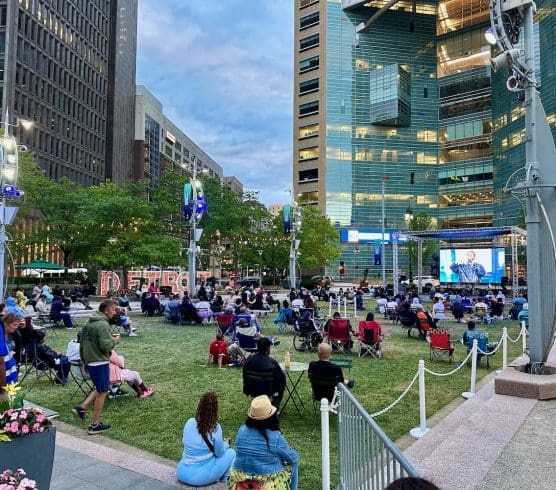We all know the pandemic has dramatically changed downtowns. Many of you may not know that Downtown Detroit was, quite fortunately, a bit ahead of the game with what we now refer to as the “live/work/play” strategy – the prevailing socioeconomic theory on the future of downtowns. Just as it implies, cities cannot rely only on their workforce population to succeed but also need to be a place where all residents, employees and visitors can work, gather, enjoy entertainment and green spaces, and move about freely and safely.
The Downtown Detroit Partnership and many others in the public and private sectors had set a plan to improve and expand our parks and public spaces for the benefit of employees, residents and visitors that started decades before the pandemic, and the benefits have already proven enormous economically and socially. Additionally, Downtown’s resident population has been steadily increasing; it continued to grow during the pandemic, albeit not as quickly as in the pre-COVID years.
So, we keep growing the “live.” We keep improving the “play.” We still need the “work.”
I’ll add here, however, that a report recently released by technology firm Kastle Systems says that, for the first time, the occupancy of offices in the ten biggest U.S. cities, “eclipsed 50 percent of their pre-pandemic average.” Downtown Detroit is aligned with that figure and trending upwards.
As the head of a downtown-focused organization in the nation’s 14th largest city, you probably think I’m a huge advocate for a return to work.
The truth is, it is only one leg in our three-legged mission. If there’s one thing we all learned, it is to embrace change (as best we can). To be sure, we need workers for a healthy downtown, but we’re learning that a hybrid model — remote and office work – can be a healthy option for workers.
Embracing that change does not mean we simply throw our hands up. In fact, it requires us to fully lean in – as it has been said, “If you don’t like change, you’re going to like irrelevance a lot less.” The ultimate goal for our community, our Downtown or any community, is to be relevant in its time and for all times, to best serve the needs of our residents, and serve as a desirable place to be no matter your need.
Let’s also consider if we’re serving the needs of employees. We’re now learning about the challenges associated with remote work.
A new report from Gallup finds that large numbers of workers, especially Gen Zers and young millennials, are not engaged with their jobs. And that could make it hard to climb the career ladder and hurt a company’s overall performance.
According to the report, younger workers have seen a more significant drop in engagement than older ones. Those under 35 reported feeling less heard and cared about at work. They said they don’t have someone at work who encourages their development, and they have fewer opportunities to learn and grow. Not surprisingly, the lack of engagement is increasing because of the pandemic, and experts don’t see that changing anytime soon.
And then there’s the friendship dynamic. An article from KornFerry cites the growing body of evidence that the quality of relationships among colleagues is deteriorating. One recent poll found that only two in ten workers in the U.S. say they have a best friend at work. “The data on friendships dovetails with the reams of research following the pandemic showing that employees feel more isolated, anxious, and depressed,” says the piece. We know that younger workers find connection and camaraderie with coworkers inside and outside their place of work. That was and is certainly true for me. We take that away entirely and risk further employee isolation, less engagement, and that important dimension of on-the-job learning.
As a person of a certain age, my social and professional networks are more established. My roles and responsibilities are clear. This is not always the case for younger workers.
As a city and even as employers, we will continue to make investments in physical capital, but our investment in human capital is equally important.
Think about how you are addressing these issues for your employees now compared to before March 13, 2020. There is no such thing as a one-size-fits-all solution but some things may be worth visiting.
Comments? Send them to [email protected].



